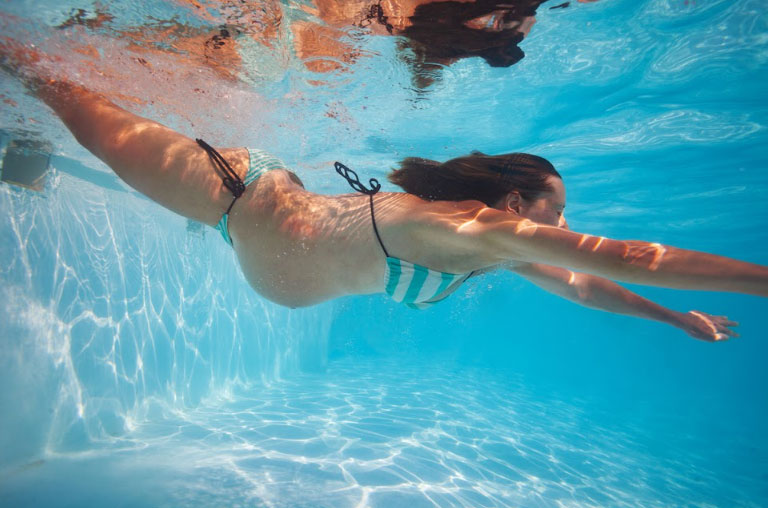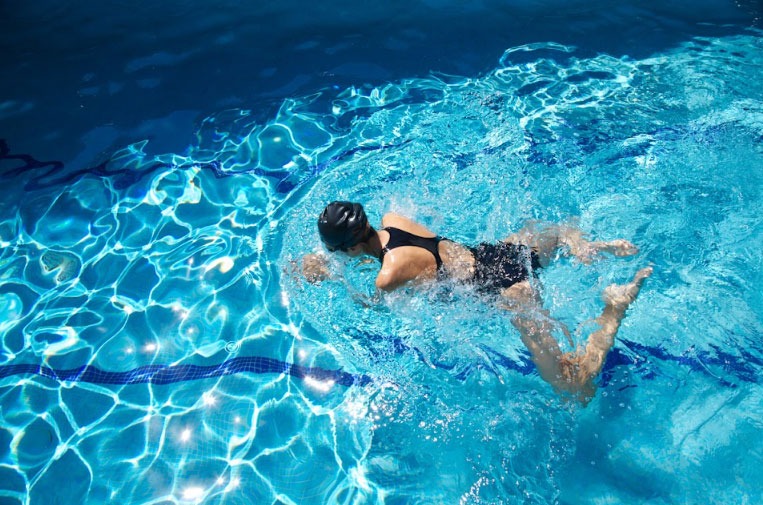How Swimming Benefits Vein Health

For women prone to varicose veins or venous insufficiency, choosing the right form of exercise is essential. High-impact workouts, such as running or aerobics, can increase strain on the veins, leading to more discomfort and swelling. Swimming provides a low-impact alternative with several advantages:
- Natural compression effect: Water exerts pressure on the body, improving blood circulation similarly to compression stockings. Studies indicate that hydrostatic pressure in water can enhance venous return by 15-20% (Journal of Vascular Surgery).
- Joint and vein-friendly exercise: The buoyancy of water reduces body weight stress on the legs by up to 90% (CDC), preventing excessive pressure on weakened veins.
- Enhanced muscle function: Leg movements, especially kicks, activate calf muscles, which play a key role in pushing blood back to the heart and reducing venous pooling.
- Reduction in swelling and discomfort: Water’s cooling effect helps minimize inflammation, offering relief from the heaviness and pain associated with varicose veins.
Best Swimming Strokes for Circulation
Some swimming techniques are more beneficial than others for women with vein concerns. Below is a breakdown of strokes and their effects:
| Stroke | Benefit | Caution |
| Freestyle | Encourages smooth circulation and rhythmic breathing | Avoid overextending the neck |
| Backstroke | Reduces leg pressure and supports spinal alignment | Requires clear lane visibility |
| Water walking | Gentle option for beginners; stimulates circulation | Best done in waist-deep water |
Strokes to Avoid
- Prolonged breaststroke: While this stroke can be beneficial for general fitness, it engages abdominal pressure, which may worsen vein discomfort if done excessively.
 Breaststroke
Breaststroke
3 Safe Swimming Tips for Varicose Veins
1. Be Mindful of Water Temperature
Warm water can dilate veins and worsen symptoms. Pools kept at 26–28°C (78–82°F) are ideal for maintaining circulation without causing excessive dilation.
2. Start Gradually
Begin with 20-minute sessions and gradually increase to 45 minutes as tolerated. Overexertion can lead to fatigue, potentially reducing the benefits.
3. Post-Swim Leg Elevation
After swimming, elevate your legs for five minutes to assist with venous drainage and maximize circulation benefits.
Where to Find Swimming Classes
For women looking to incorporate swimming into their fitness routine, structured lessons can provide guidance on safe techniques. If you’re in Florida, consider swimming classes in Miami, which offer professional instruction tailored for all skill levels.
Frequently Asked Questions
1. Can swimming cure varicose veins?
No, but it can slow progression and alleviate symptoms by improving circulation and reducing venous pressure (American Venous Forum).
2. How often should I swim to see benefits?
Swimming three times a week is recommended for a noticeable reduction in swelling and heaviness.
3. Are flippers or paddles safe to use?
Yes, they help engage calf muscles without excessive strain. However, ankle weights should be avoided, as they may increase venous pressure.
4. Should I avoid pools if I have vein inflammation?
If you experience active inflammation or thrombophlebitis, consult a phlebologist before swimming. Otherwise, water-based exercise is generally safe and beneficial.
Save it on Pinterest





Leave a Reply